This post is all about super cool lighting fixtures and lighting related products: you’ll see creative applications of LEDs and fiber optics, clever use of 3D printing and photochemistry, plus so much more. Come join the fun and see for yourself!

The panels are lit with Philips light changing LEDs and made of fabrics stretched over a patented aluminum frame. Sheer fabrics give the space an ephemeral look and the mood is easily modulated through digital controls.
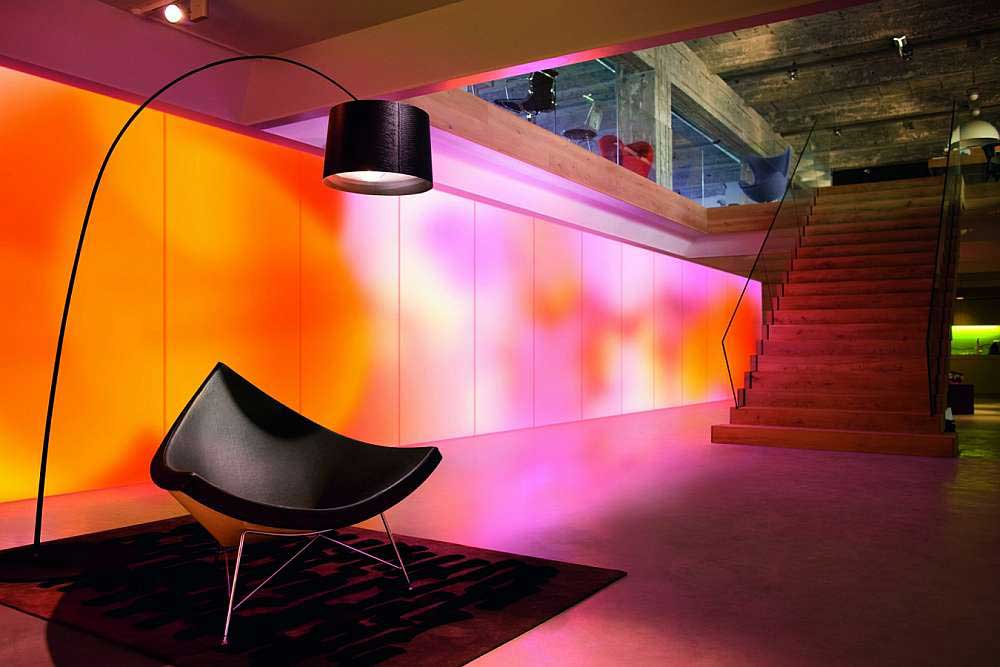
Kvadrat offers sound absorbing fabrics that can be used in conjunction with videos to animate the walls and control noise in public buildings. Thanks to Phillips, interior designers now can change the mood and color of a room with the touch of a button!

The whimsical pendants are from Chen Karlsson. You can use the pendant as a rotating exhibit for tchotchkes, objects d’art or life milestones, so the result can range from capricious to precious depending on what’s being showcased.

The contemporary ribbon-like fixture by Kundalini features a curved segment slide that slides over the stationary base. This allows the arc to be adjusted to different sizes so the lighting can be used for various tasks from reading to entertainment.
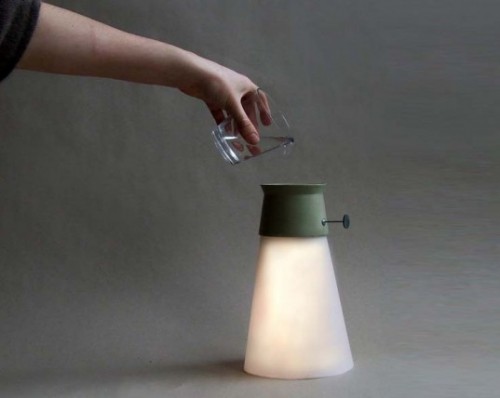
The light fixture, called WAT, consists of a sand blasted flask with LED lamps inside, a funnel of bioplastic that holds the battery and a simple steel switch. Magic happens when water is poured onto the hydroelectric battery made of magnesium powder covered carbon – the resulting reaction produces a warm white glow that is great for ambient lighting!

Hailing from Italy, Pirce is an elegant uplight made from a series of tilted aluminum rings. Available with a powerful 300W halogen or 54W LED lamp, the suspension fixture projects intriguing shadows onto the fixture, ceiling and walls.
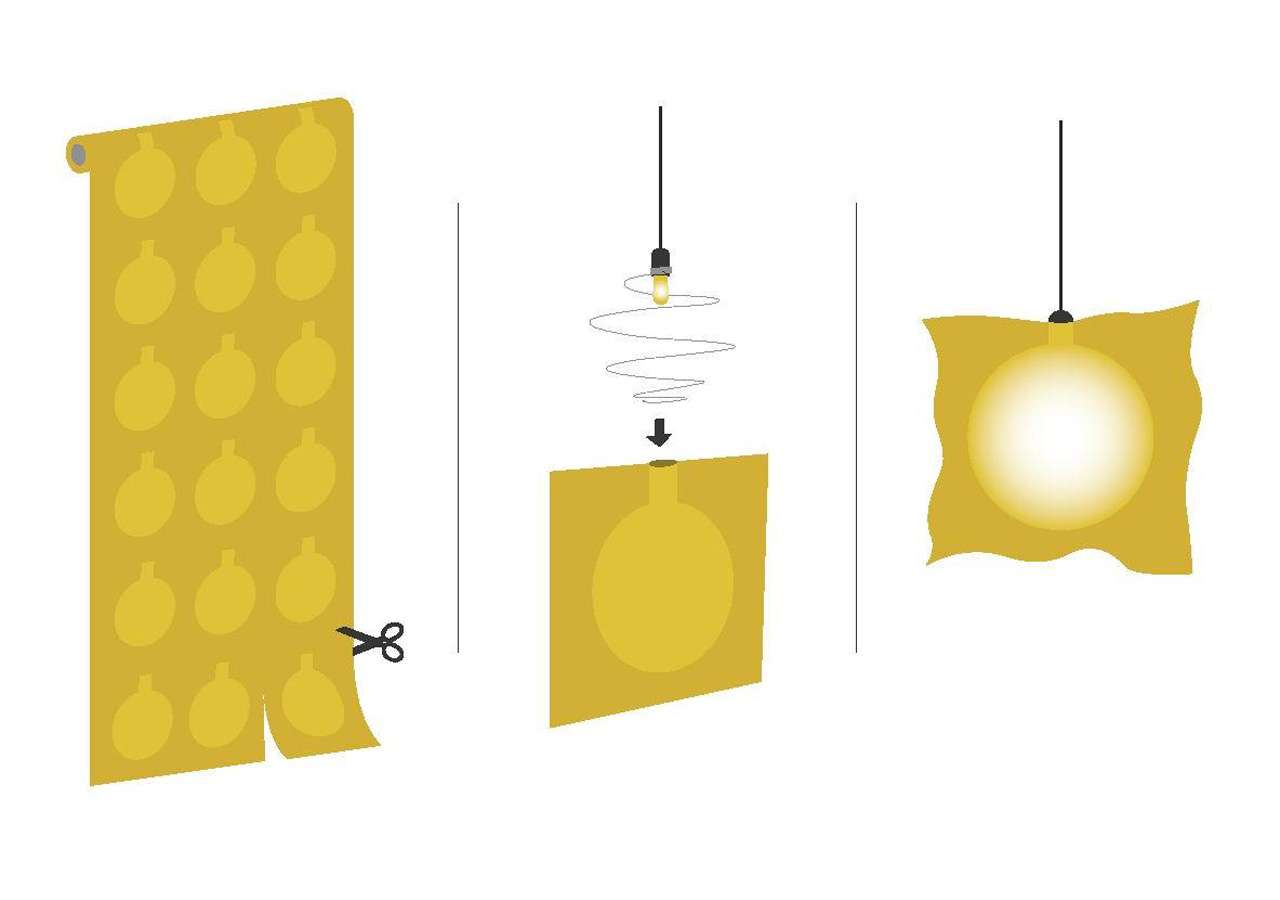
Dutch designer Henny van Nistelrooy has created a lamp shade using 3D woven fabrics. The computer generates large bolts of fabrics with built-in pockets to eliminate all sewing in production of the lamp shades. The material is then cut up to meet orders for 1, 2 or 3 lamps.
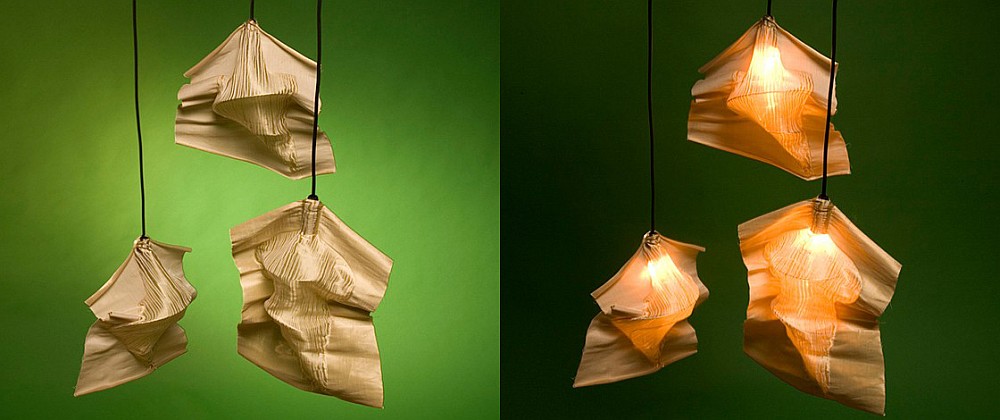
The DIY lighting is shipped with a spiral wire frame, electrical fitting and lamp shade. Stuff the wire frame and socket into the pocket and voilà a shade is born! It’s a breeze to customize the shades: digital manipulation of the pattern, shape, size and color promises unlimited possibilities.

Artist John Procario steam bends and shapes ash or white oak without use of molds into one-of-a-kind pieces. LED strip lights and plexiglass diffusers are then added to turn the sculptures into functional table lamps.
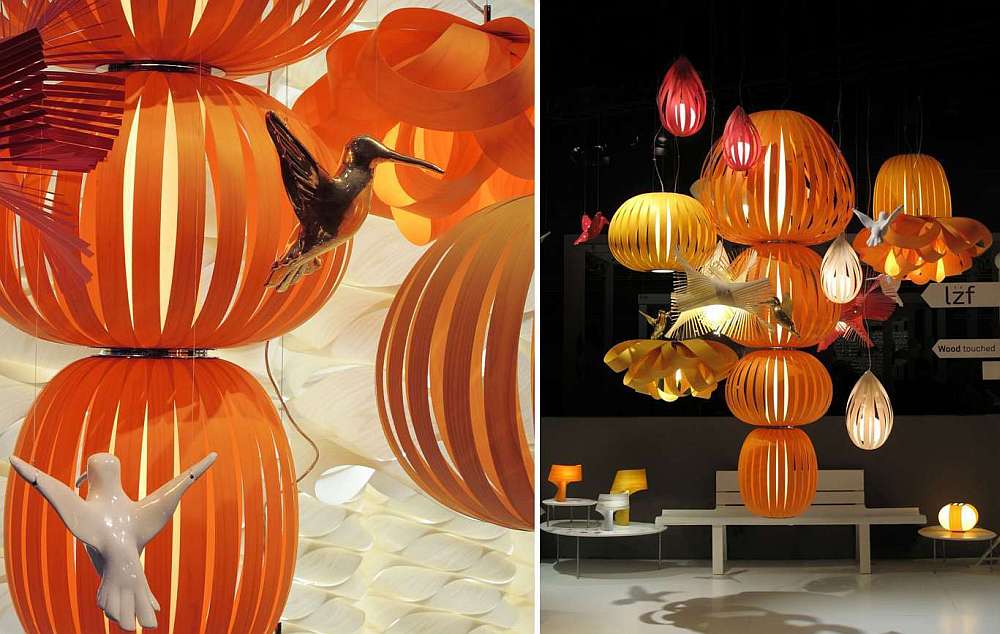
This festive chandelier is an artistic interpretation of the song Candelabro. From the words emerge gold or white ceramic humming birds and abstract cloud-like forms of FSC certified veneers which hang in suspended animation under the ceiling. But LZF is definitely not selling it for a song – the pendant light with 6 golden birds goes for a whopping $57,200.
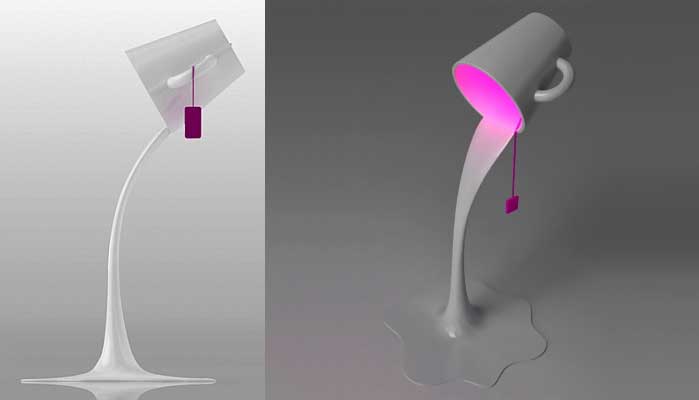
Korean designer Yeongwoo Kim created an optical illusion of a cup of tea tipped in mid-air with this table lamp. The fixture is turned on and off with a tug of the tea bag. A cool bonus: the ‘tea’ that flows from the cup is phosphorescent plastic which will retain a warm glow after the light is turned off.

Designed by Ross Lovegrove in molded polyethylene, the bench has a seating capacity of 4 and comes in a wide range of colors. The varied depth means both children and adults can find a comfortable seat somewhere on the bench.
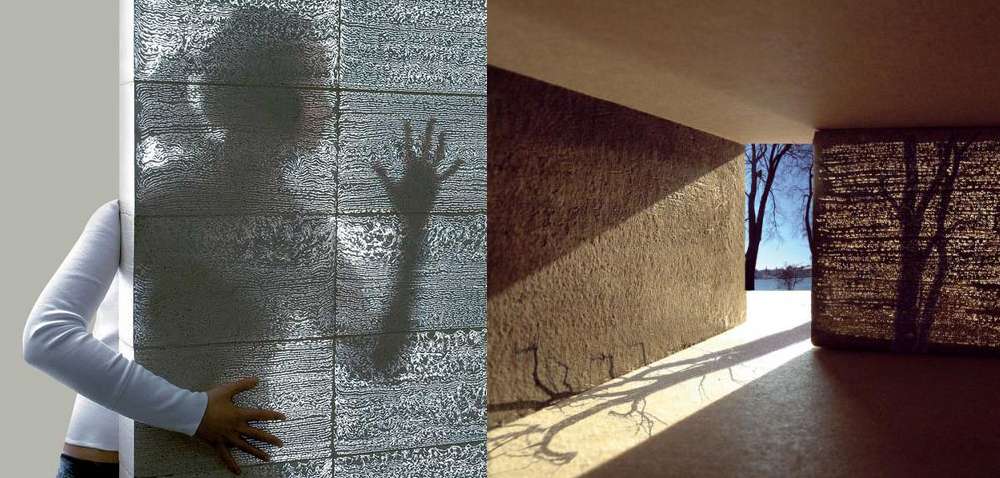
Translucent concrete may seem an oxymoron but here are a couple examples illustrating the light transmitting property of the product. As light passes from one side of the concrete to the other via fiber optics, shadows cast onto one side will appear as silhouettes on the other side.
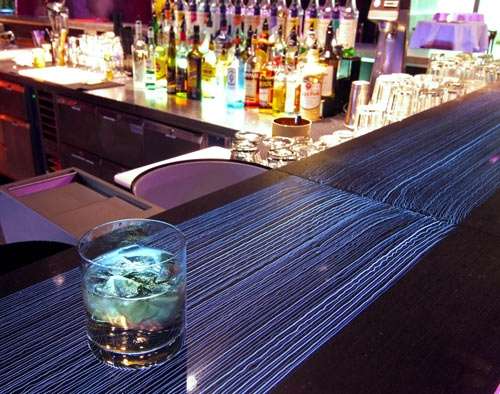
Light transmitting concrete can be used indoors or out for signage, walls, floors and counters. Although currently limited to precast blocks or panels, it’s available as veneers or structural blocks and I’m truly excited about the potential applications.
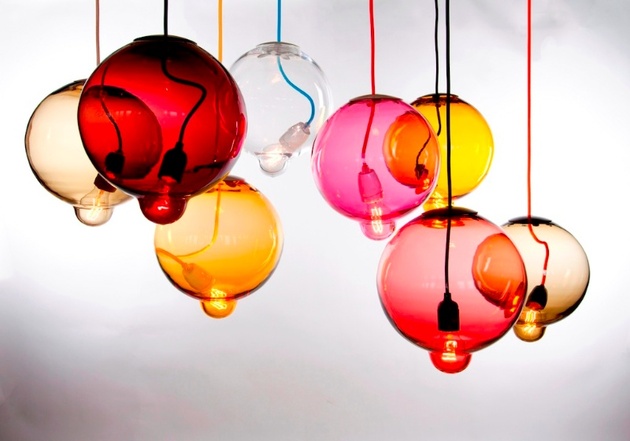
These unusual light fixtures were the brain child of designer Johan Lindstén. Called Meltdown, the suspension fixtures became a visual exploration of the Fukushima nuclear disaster.


